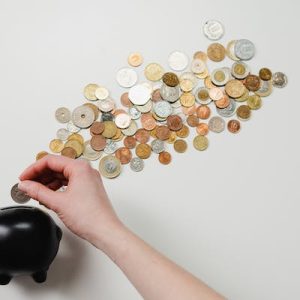No doubt, one of the most exciting parts of house flipping is selling. It’s the culmination of months of work and many house flipping steps – some which went as planned and some that didn’t. Either way all your work is finally going to pay off for you…provide you get the right price.
You most likely financed the deal by getting money from other people, be it investors or private equity. Or maybe you were lucky enough to get a loan from a bank. You bought the house and did the rehab and the home is ready for a buyer to plunk down some cash and make it theirs.
When you were first starting out in assessing the house flip, you determined the after repair value (or ARV) that the house could sell for when it’s all done. And now with the house done, you are ready to list it with a real estate broker. It’s a super exciting time in your life for sure. All those many months of hard work are finally coming to fruition and you are looking forward to leveraging your success to maybe quit your job, start your own business or go along to your next house flip.
I have long advocated ARV as a standard number to set your sights on when house flipping. ARV is an especially important number for you to know as it’s the basis for all your work and costs associated with the house flip.
If you stop and think, the price you sell for is the most important number to crunch when you flip. That number sets the tone for the entire project. If you buy a house for $160,000 or $170, 000, did minimal rehab but you can’t sell it for even $180,000 or $190,000, chances are slim you’ll make money flipping houses.
If you buy the hose for $100,000, put $50,000 in rehab into it and cannot even sell it for $160-170,000, then you will not be flipping houses for too long.
That’s why the ARV you determine at the start of the project is solid a benchmark for your profitability. But at this point after all the rehab has been done, the real number as to what the actual “after repair value” is found out right now. This is the number of what you can sell the house for today.
So let’s say in the above scenario, you bought the house for $100,000, you put $50,000 in rehab costs into it and your real estate broker tells you that the house can sell for $200,000. If she’s right, you’ll most likely make a nice profit, minus finance costs and broker fees.
To arrive at the $200,000, Chances are that your real estate broker got the pricing from using comparative houses or “comps” which have sold in your area. At six months after the start of the house flipping project, the house is looking great and you’re feeling confident that you can get your price. All you need now is a buyer.
So because the broker tells you the price should be $200,000, do you go out and list the house for $200,000? Not a chance.
Especially when you’re first learning how to flip a house, and even if you’ve flipped dozens of houses, always seek the counsel of your team. When you sell, ask the advice of your house flipping team, especially the real estate broker on your team.
Ideally, the real estate broker may be the same broker that you worked with early on when finding your first house to flip. If you agreed ahead of time to sell the house with the same broker you bought from, you need to keep your word.
Make sure you keep your word. House flipping success hinges on forging relationships with people who know, like and trust you. It proves to the real estate broker that you are a credible and honest person, which will come back to you in the end. So if you did make this agreement at the beginning of the process, keep your word.
Be honest and keep your reputation intact. If you start crossing people, they will remember and will not want to do business with you.
When your real estate agent does the competitive analysis, listen to what it tells you. Like most house flippers, you’ve been keeping an eye on the market so you probably have a good idea as to what the new price might be…but the truth is in the numbers.
When you do get the number from your broker, it could either come in above the ARV or below it. If it’s the latter, that’s when the 70% Rule will save you.
So when you do sell your house flip, make sure you put safeguards in place to make sure you lock in your profits. You do this by buying at 70% or more below what your ARV will be and the 70% includes your repair costs as well. When you do this right, your house flipping profits will be safeguarded from loss. Using these tips will help you to sell and profit when flipping houses.



